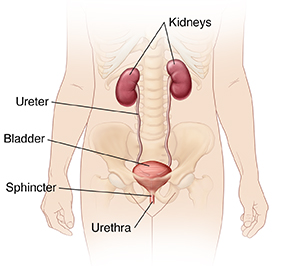Your urinary tract helps get rid of urine, your body’s liquid waste. The kidneys collect chemicals and water your body doesn’t need. This is turned into urine. Urine travels out of the kidneys through the ureters to the bladder. The bladder holds urine until you’re ready to release it. The urethra carries urine from the bladder out of the body. The main sphincter muscle circles the mid-urethra. It keeps your urethra closed. When you urinate, your brain tells the sphincter to relax so you can release urine.
Featured in


